Experiences Quilting with Men’s Dress Shirts – A Sustainable Approach to Quilting
Experiences Quilting with Men’s Dress Shirts – A Sustainable Approach to Quilting
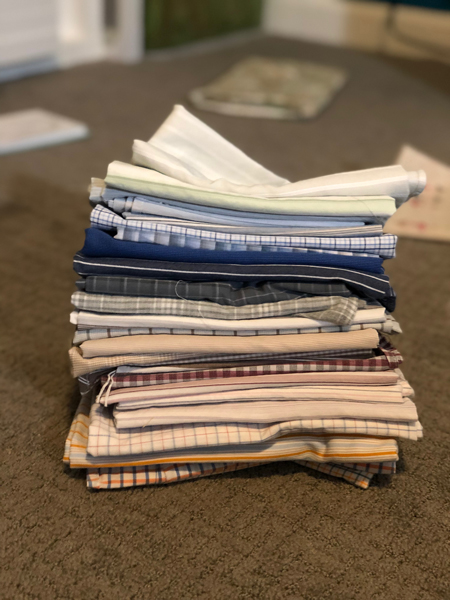
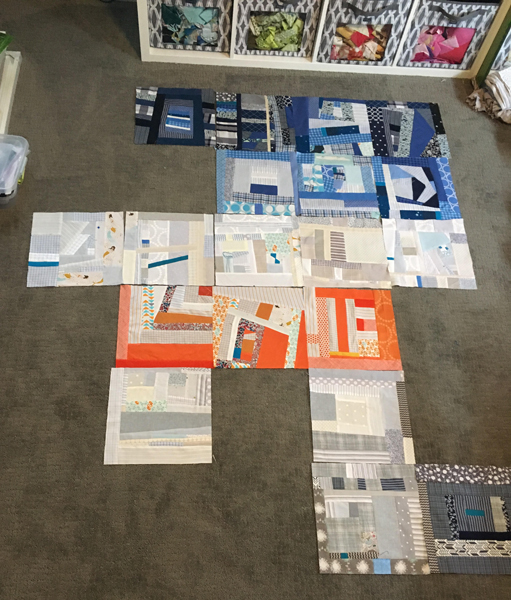
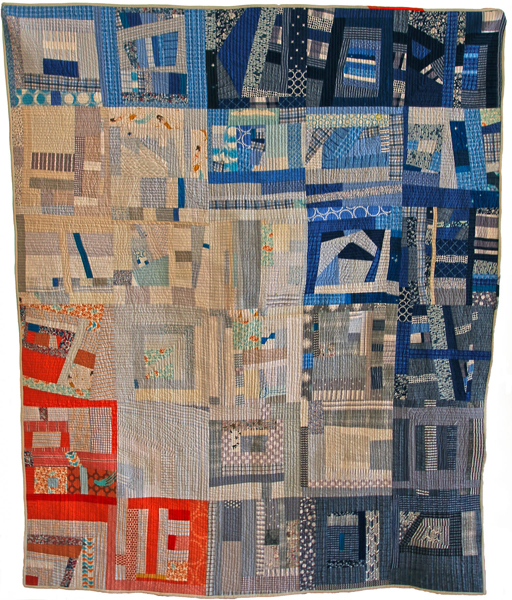
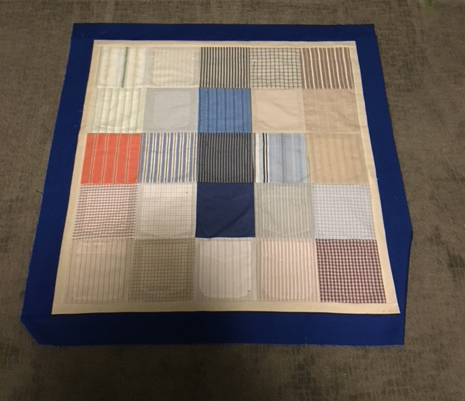




By Shelly Sommer
One of most sustainable ways to quilt is to pull fabric from the waste stream for your projects. Reclaiming fabrics gives them a second life, saving them from the landfill and making new use of the energy and resources already embodied in the material. It also gives you unique materials to play with and saves you cash. Are you interested in trying out some reclaimed fabric in your projects? Try browsing through some of these insider tips to get started.
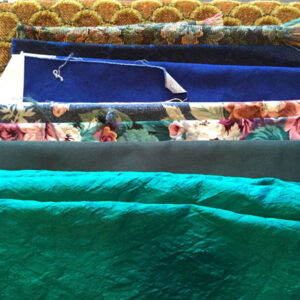
Chain thrift stores are the easiest, most reliable places to find clothing you can convert into quilting fabric. They not only have gazillions of items to choose from, they always have certain types of garments that convert easily into quilting material, like men’s shirts and jeans. Smaller, independent thrift shops generally have less selection but may support a cause close to your heart—they can (sometimes) also be better curated. You’re bound to find something suitable for your project at a thrift shop. Some serendipity is still involved, though – you need an open mind and a little luck.
Local thrift stores include:
Creative reuse centers are thrift shops that specialize in art and craft materials. Most have a broad spectrum of materials for every craft you can imagine, though in some parts of the country you can find stores that focus entirely on sewing. Creative reuse centers are great places to find fabric donated by sewists or their estates: yardage, remnants, bolts, and rolls.
Local stores include:
More chaotic and less reliable than thrift shops, these personal sales are hit or miss. But if you find a destashing sewist at home you can find treasure. Garage and especially estate sales are good places to luck into vintage linens. Look for embroidered table linens, damask items, hostess aprons, dresser scarves, table runners, and vintage handkerchiefs.
Americans discard an average of 80 pounds of clothes per year. 80 pounds. Have you tried lifting 80 pounds? It’s a lot. Very little is reused or recycled. Change those numbers for you by folding some of your tired clothing into quilt material. Quilting is also a great way to reuse those fast fashion pieces that snuck into the house, then shrank or fell apart after their first wash and can’t be donated.
Will you try using some reclaimed fabric in your quilts? We’d love to see what you do and how it goes: comment below or tag us on Instagram @bouldermqg We also have a Sustainable Quilts board on Pinterest full of inspiration!
You might consider where your fabric comes from, but you probably don’t think as much about the sustainability of your batting. Cotton is a common batting material, but there are plenty of more sustainable options.
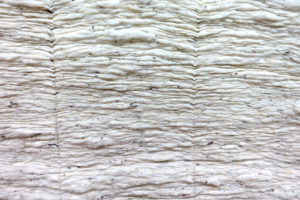
By Shelly Sommer
Bamboo requires much less water and pesticide than cotton, making it a more sustainable batting choice. It has buttery soft drape and doesn’t crease like cotton. This my personal favorite.
Quilter’s Dream Orient is a blend of bamboo, cotton, peace silk, and Tencel. Shrinkage 3%. Feels a lot like cotton to work with, though it seems to crease a little less.
Great drape, strong, relatively heavy, and warm warm warm.
Quilter’s Dream Green Dream is made from recycled plastic bottles. It has a pale green color that might show through quilts that use thin white fabric, but is otherwise a great option if you want a lightweight, washable batting with very little shrinkage (<1%).
By Shelly Sommer
In October, The Boulder Modern Quilt Guild, along with the Sustainability, Energy and Environment Community at University of Colorado Boulder, will present a modern quilt show, An Exploration in Sustainable Modern Quilting. In the next few weeks we will be posting some blog posts with information about sustainable quilting including sources for sustainable fabrics, how to clean recycled or reused fabrics, and more. Shelly has provided us with some great alternatives to quilting cotton.
When you start quilting, using cotton is the obvious choice. When you walk into a quilt shop you’re presented with colorful bolts of quilting cotton. There are so many options, it’s readily available, and it’s easy to work with. But there are environmental issues with cotton:

Made from the flax plant, linen requires much less water than cotton and hardly any fertilizer or pesticides.
Linen is usually sold as solids and the color choices are limited. But it’s natural khaki shade is available without any additional dyeing.
Linen has a loose weave that makes it less stable than quilting cotton so you will probably need to use starch. Linen isn’t ideal for precise piecing, but works well for piecing curves.
Like linen, hemp is made from a plant that requires little water, fertilizer, or pesticide and is easy on farmland.
Hemp can be woven into a sturdy, smooth fabric that looks similar to linen, or into knits like jersey.
Because hemp is made from the Cannabis sativa plant, it was banned from commercial production until recently. Colorado, among many other states, is starting to license agricultural production, which may lead to more domestically- produced hemp fabric becoming more available.
These fibers are all made from cellulose and are the most ecofriendly types of rayon. Raw materials are sustainably managed beech or eucalyptus trees or bamboo, and manufacturing uses closed-loop systems that recapture chemicals instead of dumping them into rivers.
Fabrics made from these fibers are soft and lightweight and are used more for clothing than quilting. However, they can be fun to experiment with and can add bits of softness to the structure of a quilt block. Fancy Tiger usually has an interesting selection of these fabrics in various weights.
Polyester is a petroleum product that never biodegrades and requires much more energy (though much less water) to manufacture than almost any other fabric. So usually it wouldn’t be considered a sustainable fiber. Recently, however, recycled polyester fabrics have become available that reuse polyester fibers that might otherwise wind up in the environment. Most of these are knit fabrics. Worth experimenting with!
Cotton can be blended with silk, bamboo, linen, or hemp to make fabrics that have less of an environmental footprint than straight cotton. They often combine the best qualities of both fabrics: for instance, silk-cotton blends have the soft hand of silk but the strength and washability of cotton. Look for chambrays, solids, and prints.

Solids from American Made Brand (a division of Clothworks) are made from cotton that is grown, spun, woven, and dyed in the United States. It has a smaller carbon footprint, since the fabric hasn’t been shipped around the world twice by the time it gets to you; and labor conditions aren’t a concern.
Their color palette is limited, and their colors aren’t as consistent from batch to batch as Kona.
Factories in Japan are monitored much more carefully than competitors elsewhere in Asia. They also regulate the use of chemicals like formaldehyde (unlike the U.S.). This makes Japan a clear winner in labor practices and the environmental footprint of the manufacturing process.
Hoffman Fabrics owns their factory in Bali, and it uses a water filtration system that removes dyes and other chemicals from the manufacturing process from the water before it leaves the factory. This makes Hoffman lines made there (Indah batiks, Me + You) easier on the surrounding environment and communities.
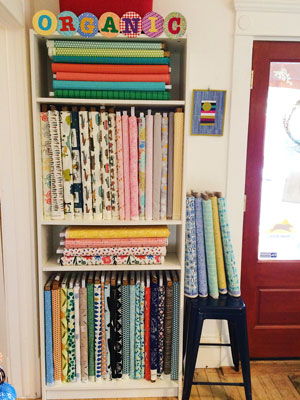
Organic cotton skips the heavy pesticides that make cotton hard on land and water, but it can take more water to grow than regular cotton.
Lines like Amy Butler “Organic Soul” and Cloud9 use both organic cotton and low impact dyes. In addition, Cloud9 has a commitment to the ethical treatment of workers in its manufacturing facilities.
Our Sustainable Quilting Pinterest board has inspiration and ideas for the show. If you come across any great quilts, send them our way! And please, let us know if you have any questions you’d like us to answer about the quilt show or sustainable quilting in general.
In 2018, The Boulder Modern Quilt Guild, along with the Sustainability, Energy and Environment Community at University of Colorado Boulder, is excited to announce a modern quilt show, An Exploration in Sustainable Modern Quilting. The show will hang at the Albert A. Bartlett Science Communication Center, 4001 Discovery Drive, Boulder, CO, in the fall.
Quilts submitted by members of the Colorado Front Range quilting community will be showcased based on originality, design, technique, craftsmanship, and visual impact of sustainability. Each submission is required to fit within at least one of the categories; repurposed or rescued fabrics, renewable or sustainable new fabrics, scraps, waste, or otherwise trashed fabric, repaired/restored or reworked ‘old’ quilts into new quilts, and unusual materials.
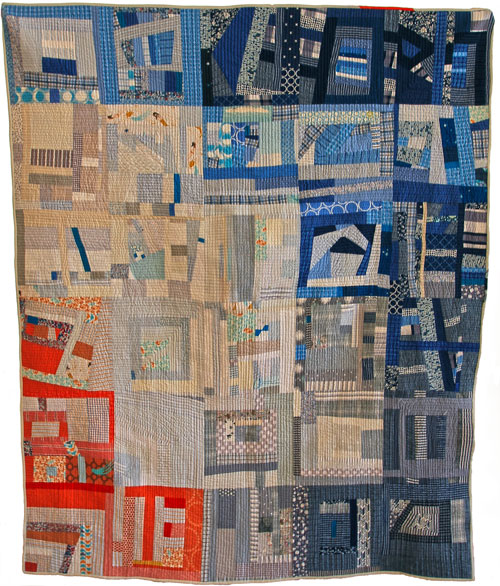
Quilters who live along the Colorado Front Range are invited to submit up to (3) quilts to be juried by our BMQG panel, Anne Deister, Shelly Sommer, Laura Loewen, and guest Front Range community juror, Stephanie Ruyle of Spontaneous Threads.
This is a wonderful opportunity to challenge both quilters and the community to view what a modern quilt is and how it can be constructed using sustainable, environmentally friendly materials and practices.
To submit a quilt, please review the call for submissions.